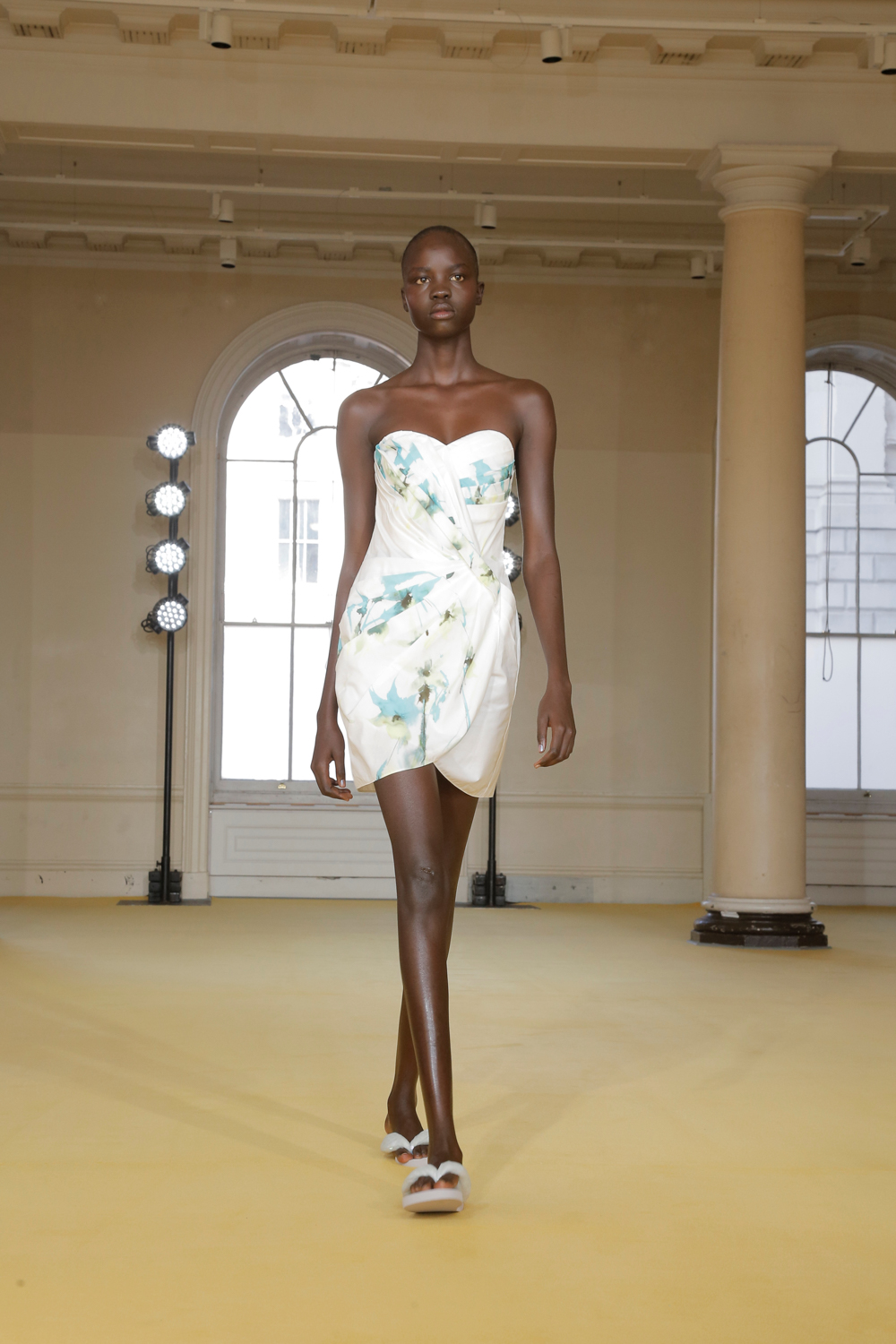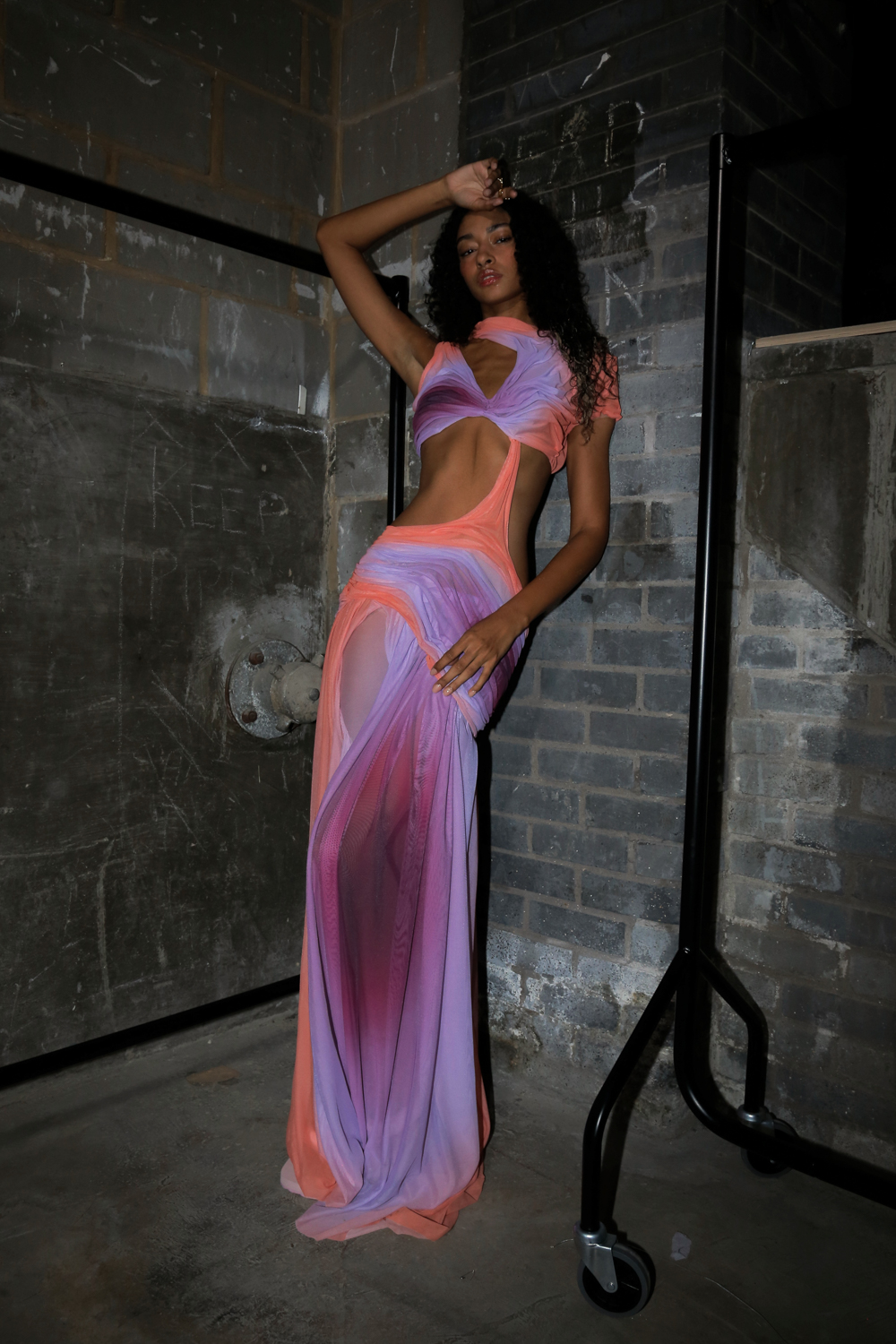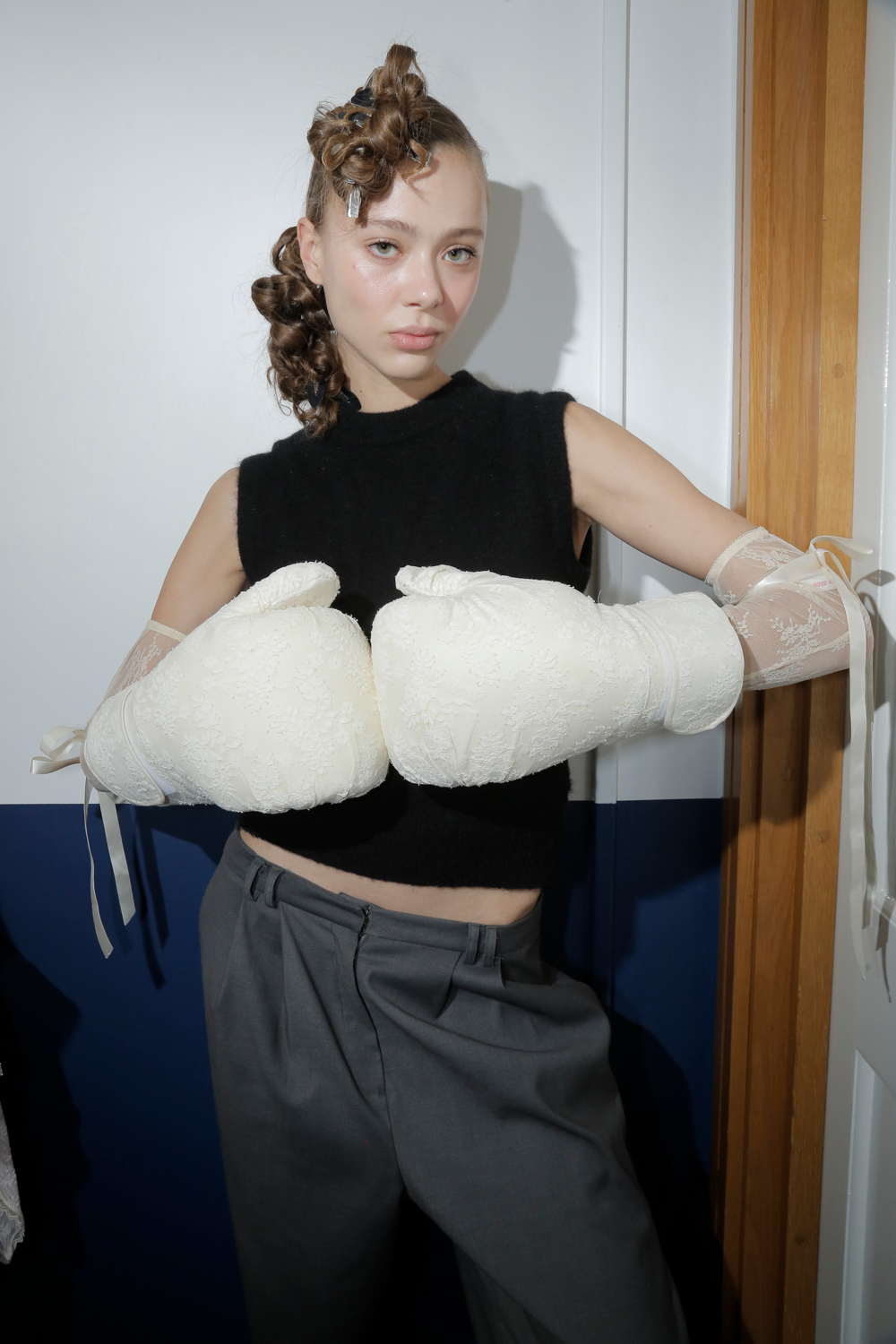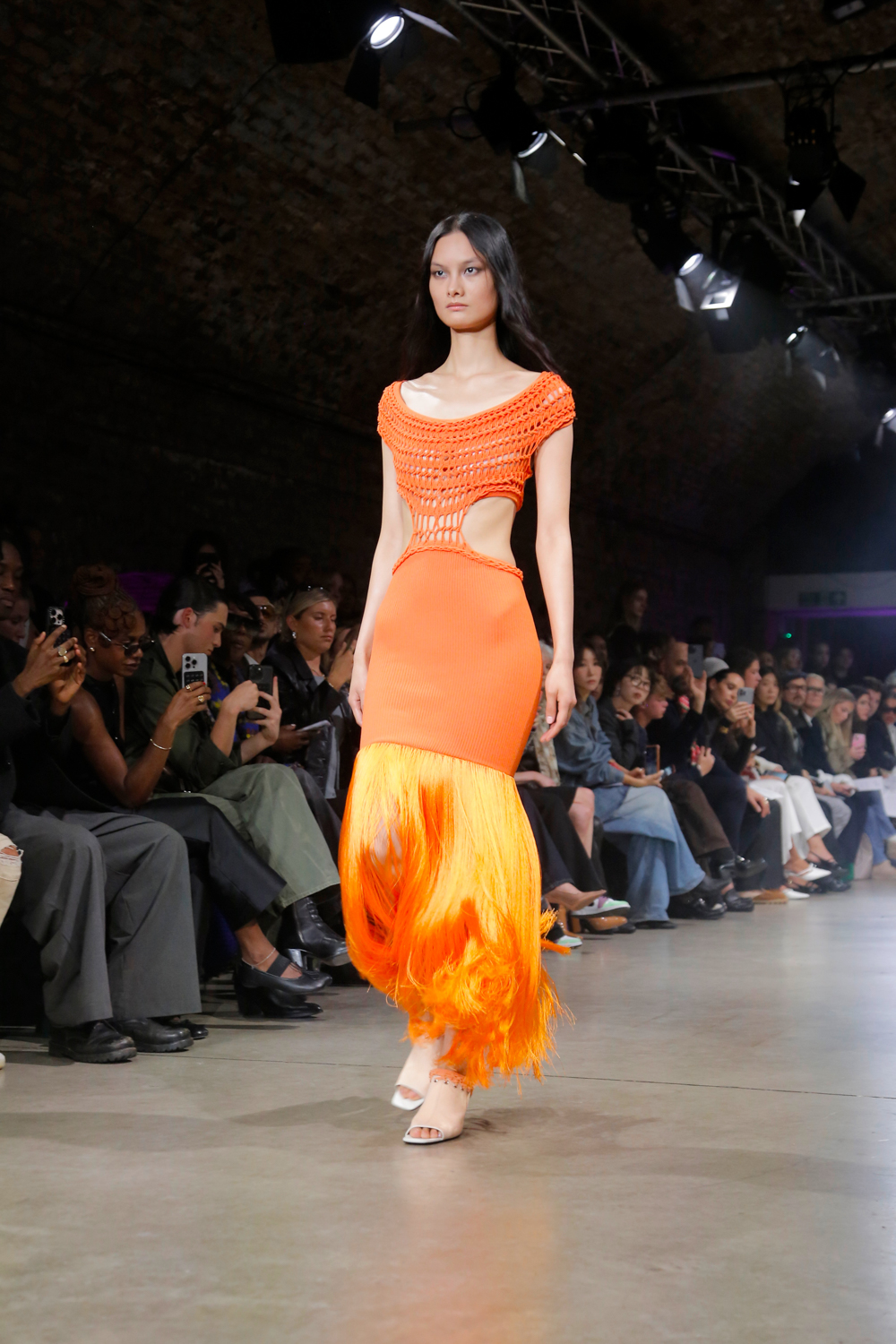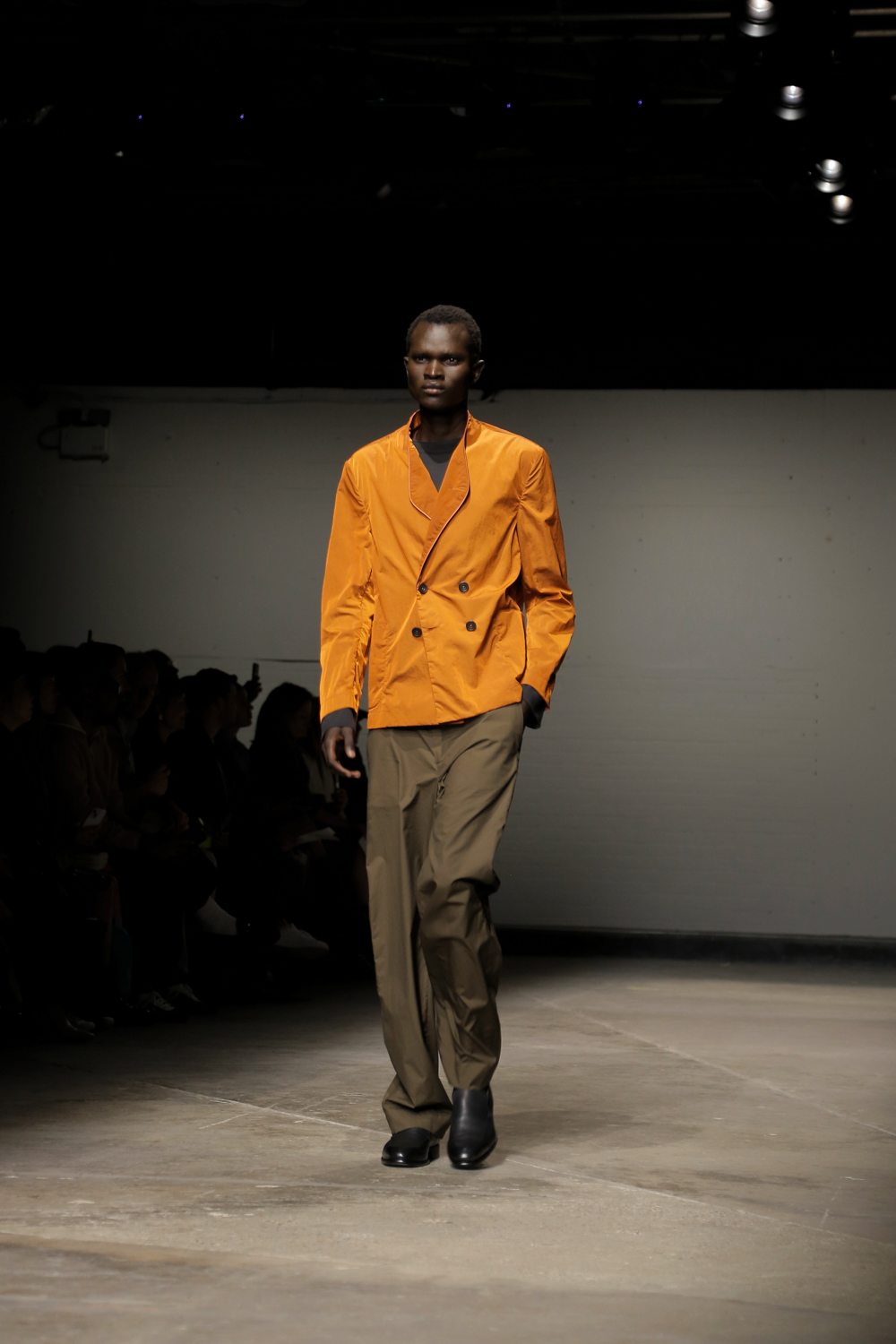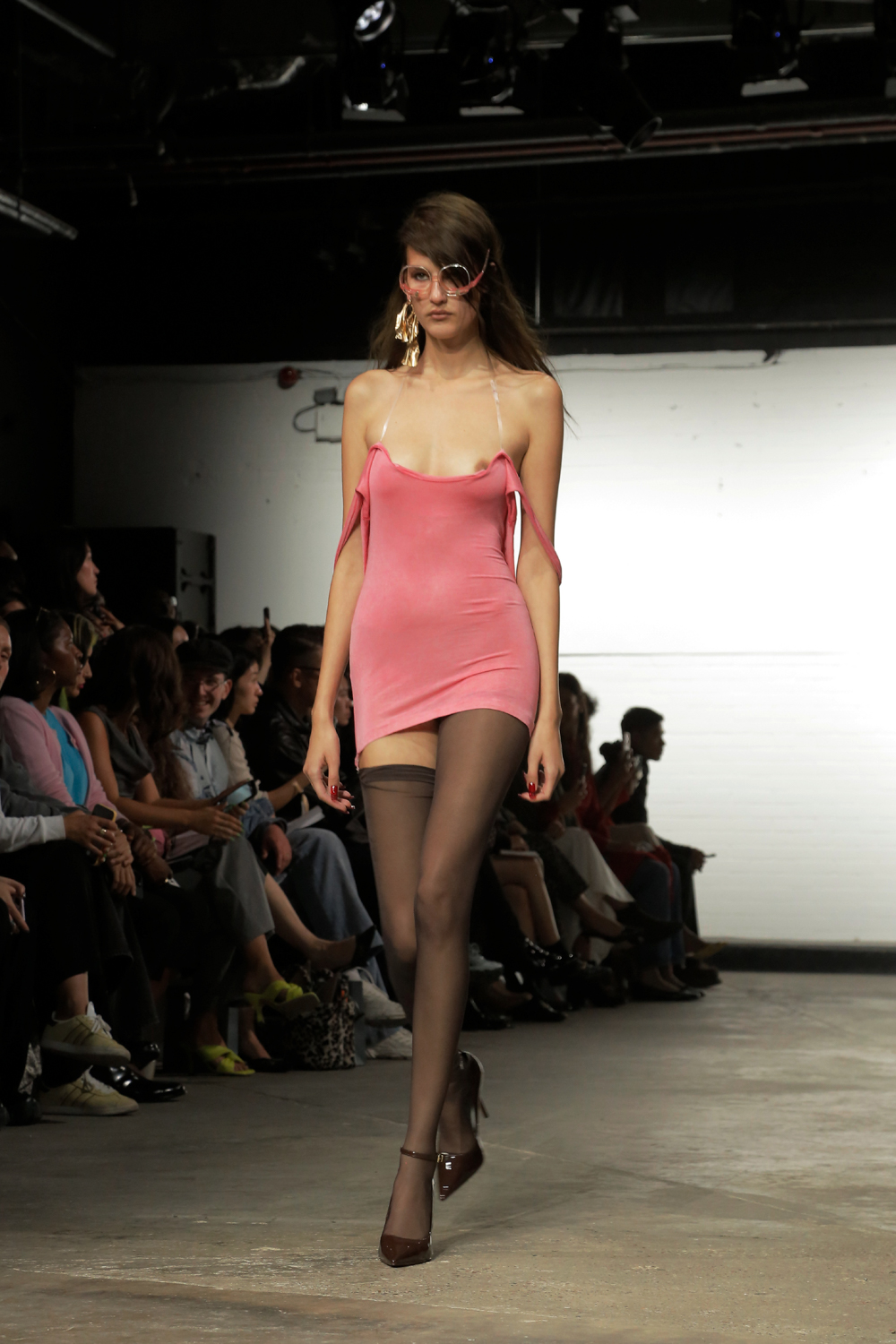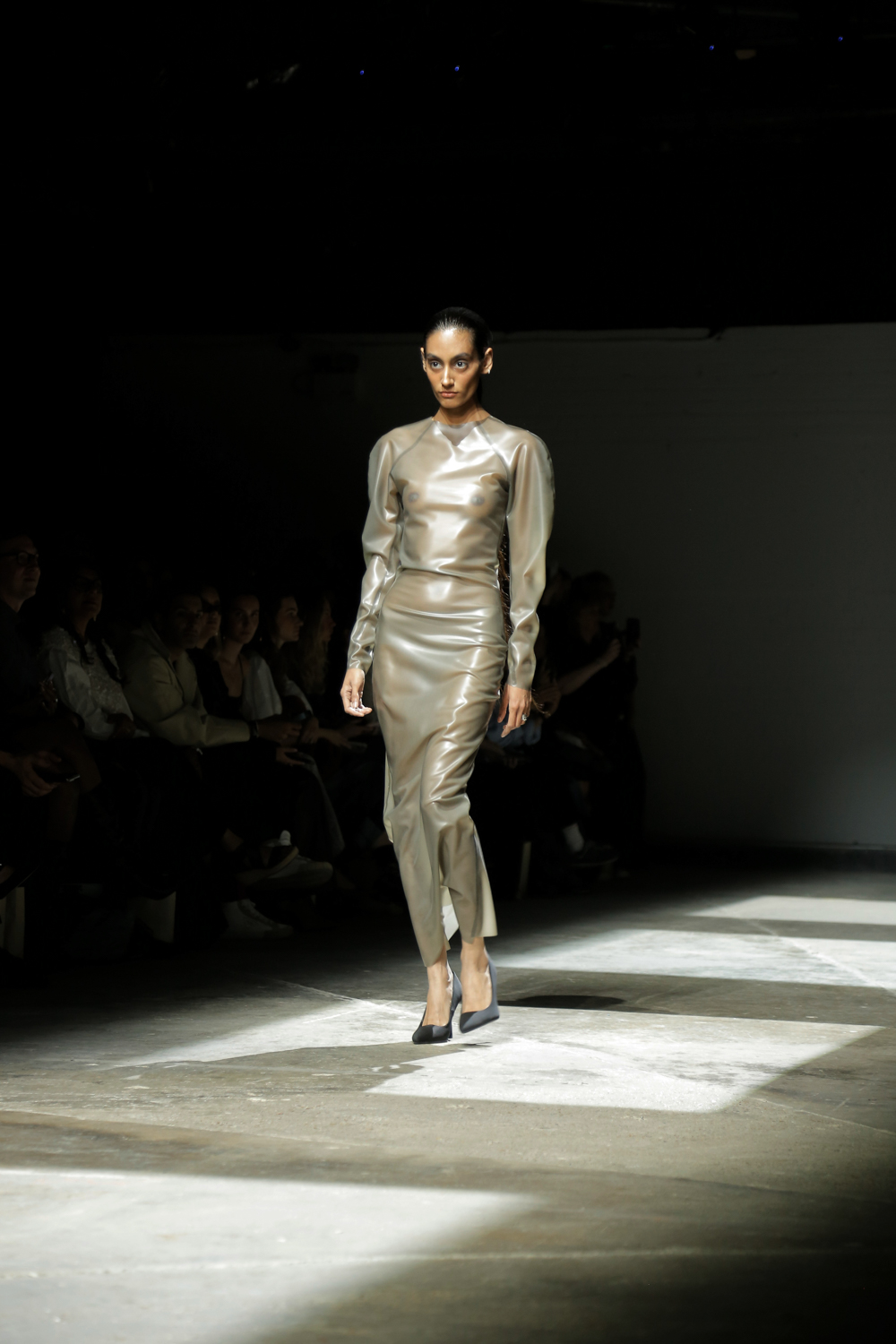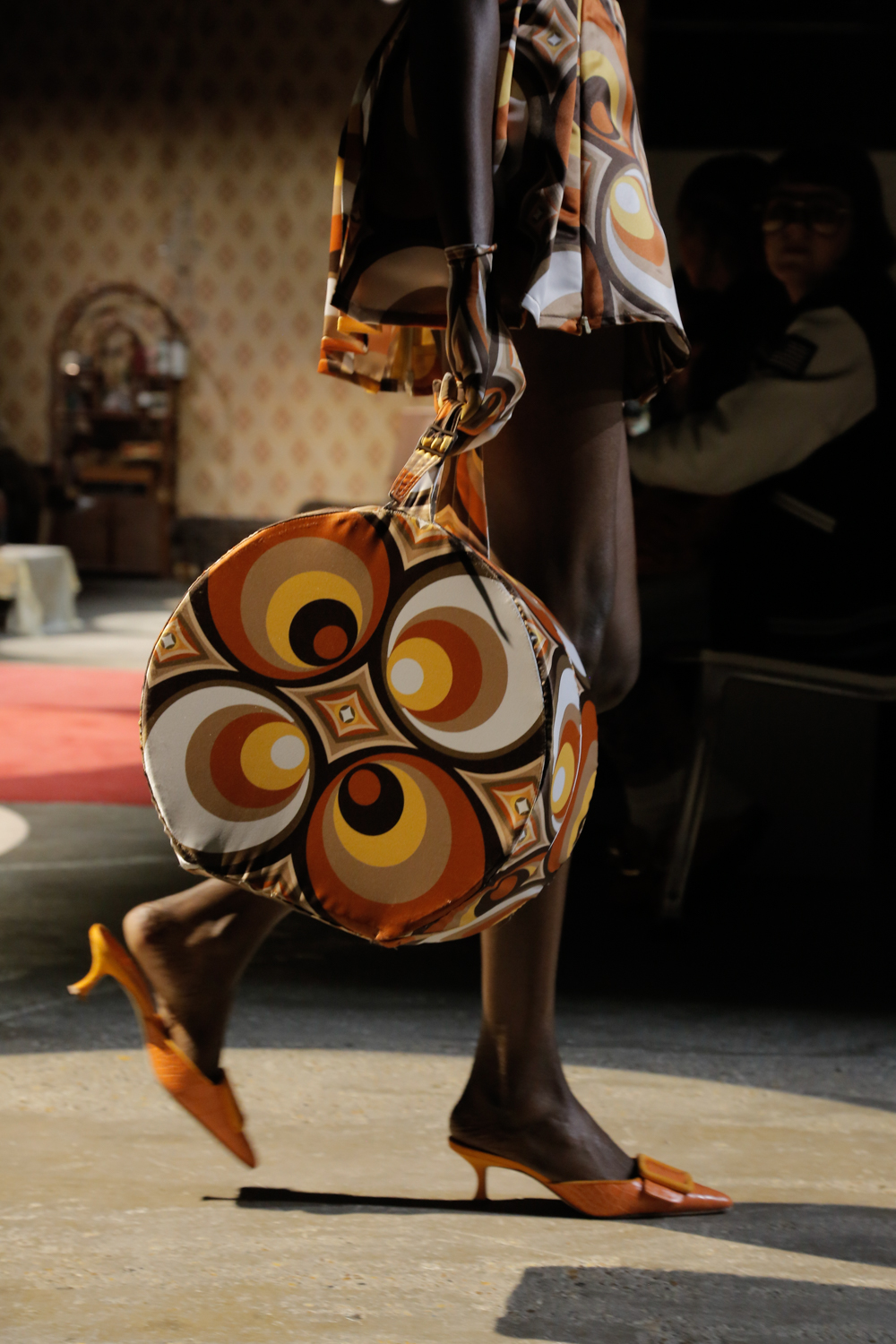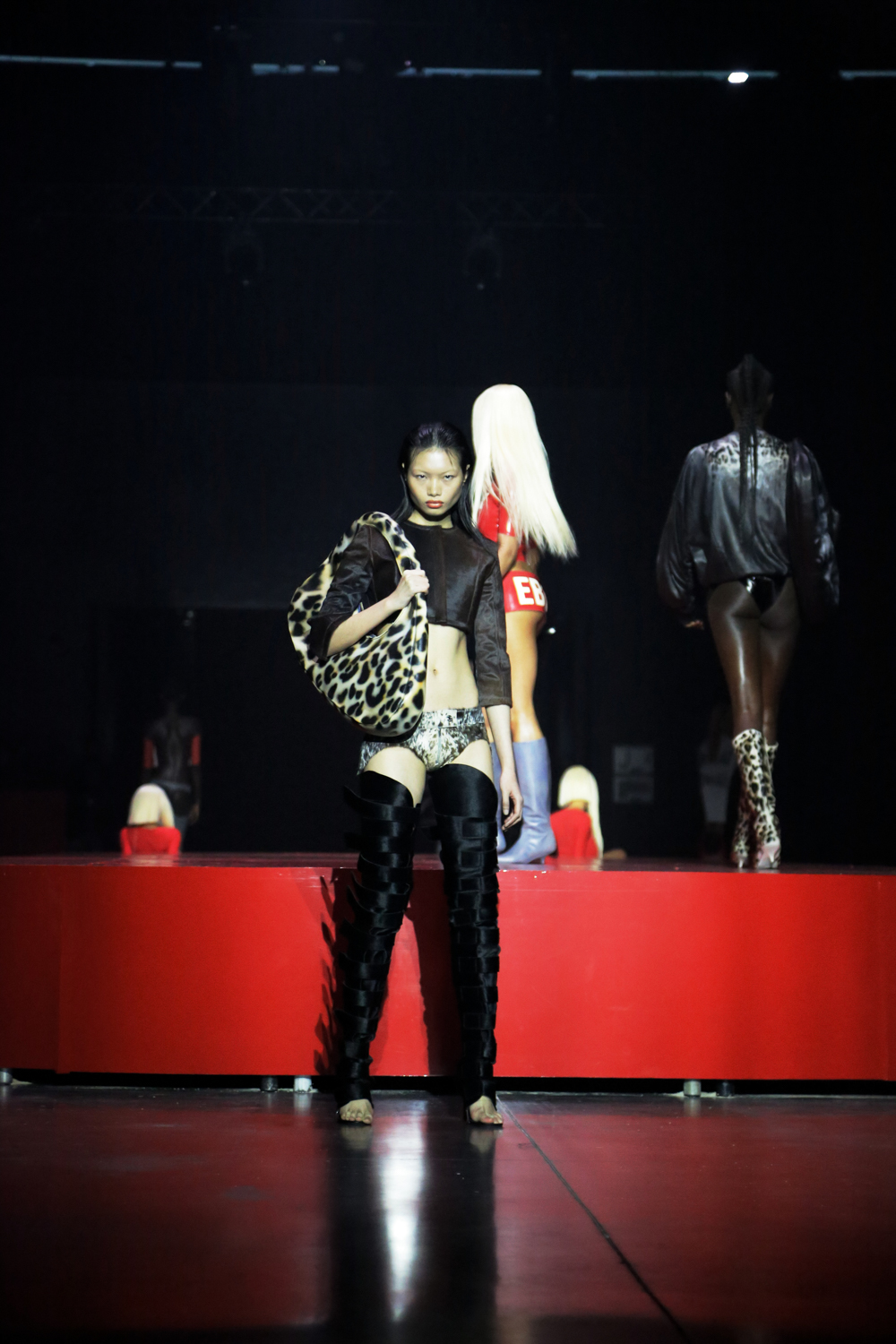by Cosimo Baldi
Pictures by Simran Kaur
Beneath the glare of London city lights and the soft murmur of the crowd, the London Fashion Week for 2024 unveiled more than just garments, it delivered a canvas of emotion, movement, and revolution. From delicate lace embroideries to the bold strokes of latex, this year’s collections seemed to paint an otherworldly narrative: a story of reconnection, resilience, and redefinition. The designers spoke in a universal language of fabrics, textures, and colors, drawing us into their world of delicate beauty, raw power, and unfiltered humanity. What echoed most vividly on these catwalks was a subtle rebellion—a celebration of the individual, of natural beauty, and of an evolving world where the boundaries between the physical and ethereal blur.
Soft, powdery hues dominated the runway, with pops of pink that felt almost nostalgic—calling forth the innocence of a dream but with an edge of modernity. The ideal of strong femininity was not whispered tho; it was shouted in bold, skin-tight silhouettes and stark, unapologetic declarations of identity.
Where some wove femininity with strength and others shouted identity from the rooftops, some more took us to their garden, in a peaceful sanctuary where softness, grace, and natural beauty converged in an ethereal embrace.
This year, the fashion side of united kingdom presented a fusion of seemingly opposing ideals, but at its core, the collections spoke to one unifying trend: a return to authenticity. All the runways were dominated by an undeniable sense that fashion is no longer about escapism—it’s about embracing reality, in all its beautiful, raw, and often uncomfortable forms.
The overarching use of lace, sheer fabrics, and organic textures in these collections suggests a deep yearning for connection, both to the natural world and to the self. Designers are rejecting excess in favor of pieces that feel personal, intimate, and almost ritualistic.
Bold colors and contrasting fabrics further emphasized the juxtaposition of rebellion and nature. These contrasts were not accidental; they reflected a world where opposites coexist, where the hard and the soft, the bold and the delicate, become part of the same narrative.
The catwalk wasn’t just a place for fleeting fashion statements, but a platform for deeper reflections on individuality, sensuality, and the fluidity of gender, all while maintaining a grounding sense of tradition and nature. Through the vivid use of contrasting materials—soft and harsh, sheer and opaque, organic and industrial—the collections spoke volumes about the emerging direction of fashion. The future seems to lean towards a convergence of empowerment and sensitivity, boldness and introspection, rawness and refinement. This amalgamation defines not only the present state of fashion but hints at where the industry is headed.
Surely, one of the strongest underlying themes throughout the collections presented was the delicate balance between vulnerability and power. Across the board, designers explored this intersection, often through the juxtaposition of soft, delicate fabrics like lace and silk with stronger, more structured materials like latex and leather. This tension, mirrored in the visual contrast of materials, colors, and silhouettes, speaks to a broader cultural narrative: that strength and vulnerability are not mutually exclusive. Rather, they coexist in today’s evolving definitions of identity and beauty.
In addiction to that, from gender-fluid garments to unapologetically bold statements, designers embraced the act of pushing boundaries.
Dresses in soft pinks, whites, and blacks were covered in intricate floral motifs, with patterns that seemed to grow out of the fabric like vines. The effect was mesmerizing: garments that felt as though they belonged not on a runway but in a lush garden. These collections seemed to suggest that in a world increasingly dominated by technology and industrialization, there is a yearning for simplicity and connection to the natural world. Shades of pink met muted, earthy browns and deep greens, conjuring the image of delicate petals scattered across forest floors—a motif that emphasized both fragility and resilience. This connection to nature was reinforced by the earthy tones that dominated many of the collections. Greens, browns, and muted pastels recalled the changing of seasons, the earth beneath our feet, and the flora that surrounds us. These tones, combined with flowing, soft fabrics, created a sense of harmony between the wearer and the world. It was as if the garments themselves were living, breathing extensions of nature—simultaneously delicate and strong, much like the human print.
The prevalence of pink throughout many collections can no longer be dismissed as merely a feminine color. Designers are reclaiming pink, using it as a symbol of both softness and power. In one collection, flowing pink dresses draped effortlessly over models’ shoulders, suggesting vulnerability and intimacy. In another, bold neon pinks were paired with latex and leather, transforming the color into a beacon of rebellion and self-expression. Pink, a color long associated with femininity and softness, was reclaimed in new contexts that challenged its conventional readings. From pastel lace dresses that evoked notions of romantic innocence to high-gloss neon latex ensembles that radiated power and rebellion, pink transcended its historically limited palette. Designers utilized this hue to express a broader spectrum of identity, one that is at once tender and confrontational.
Black, too, played a significant role, offering a stark counterpoint to the soft pastels and florals that dominated. The use of black latex and leather throughout various collections symbolized strength, authority, and defiance. Yet, when paired with delicate lace or organic silhouettes, the combination of black and softer elements created a new kind of femininity—one that embraces both toughness and tenderness.
Perhaps the most significant trend emerging is the seamless integration of technological innovation with traditional craftsmanship. Designers moved effortlessly between the organic and the synthetic, creating garments that feel both futuristic and timeless. In doing so, they suggested that the future of fashion is not a rejection of the past but a reimagining of it.
If we had a large contrast and deep meaning rebirth about the used colors, at the other end of the spectrum, designers integrated textiles and techniques that echoed the organic beauty of nature. Lace, with its intricate patterns and delicate structure, often mimicked the forms found in the natural world—evoking vines, foliage, and floral motifs. These elements were interwoven with heavier materials such as leather or satin to create garments that felt both ethereal and grounded. The result was a sartorial manifestation of the convergence between nature and human ingenuity, a reflection of our evolving relationship with the natural world in an age of technological advancement.
The choice of materials, particularly latex, patent leather, and other synthetic fabrics, speaks to a growing trend of designers embracing the avant-garde, often presenting garments that challenge traditional gender roles and the typical silhouettes associated with masculinity and femininity. These materials, inherently bold and somewhat confrontational, are used to reject the idea that fashion must adhere to a binary understanding of gender. Instead, latex was used as a second skin—a barrier that simultaneously shields and exposes the body, making it an extension of the self. The models became walking symbols of freedom, not bound by the limitations of societal expectations.
The textural complexity of these collections speaks to a future where material innovation and sustainability can coexist. Fabrics, while sculptural and futuristic, retained an artisanal quality, suggesting a commitment to craftsmanship even as designers push the boundaries of modern garment-making. The tactile richness of these pieces invites the viewer to not only observe but also to experience the garments on a more intimate, sensory level
This year, the London Fashion Week has laid the groundwork for a new paradigm in fashion—one defined by duality, fluidity, and material innovation. In this new landscape, garments are more than just clothing; they are expressions of self, culture, and our relationship with the world around us. Fashion’s future, as seen on the runways this season, is one of convergence: the meeting point between extremes, where the boundaries between nature and technology, the past and the future, begin to blur.
